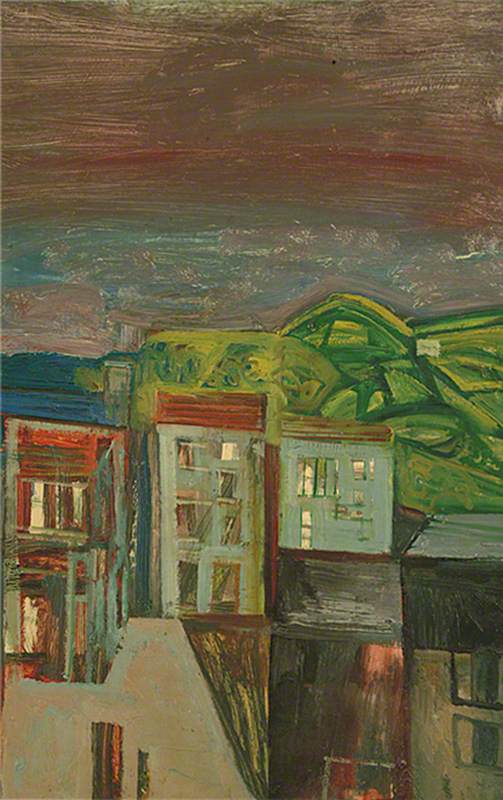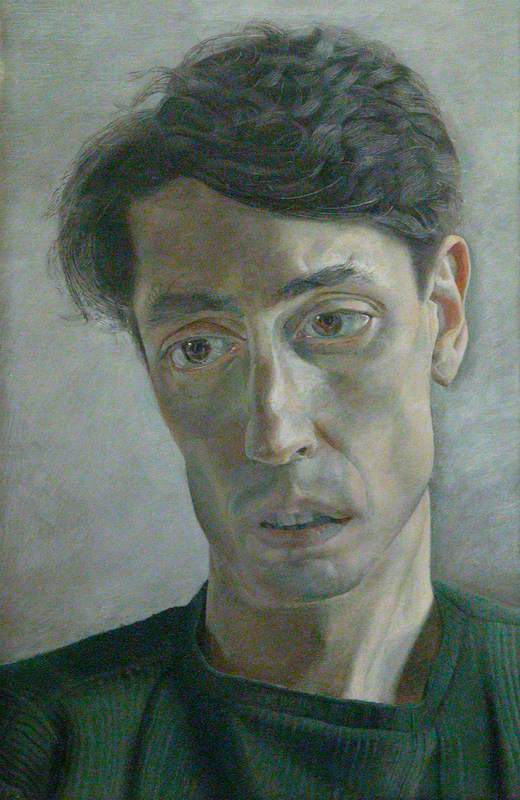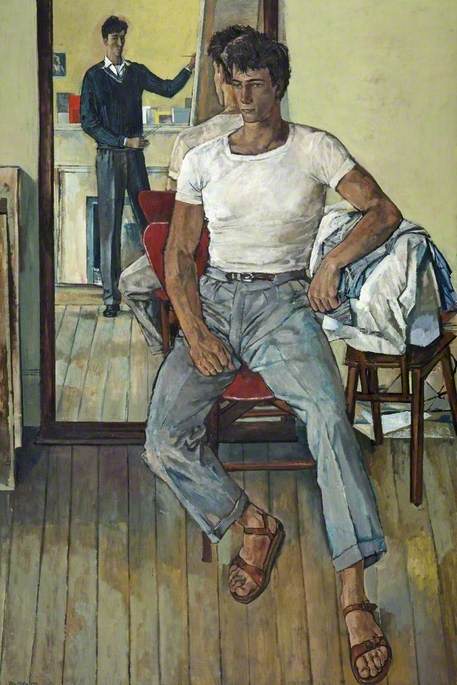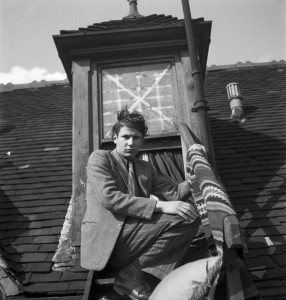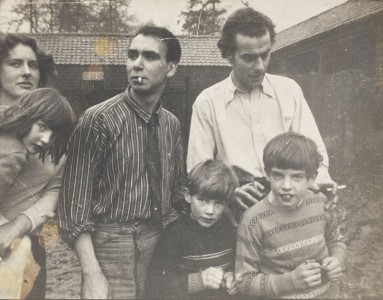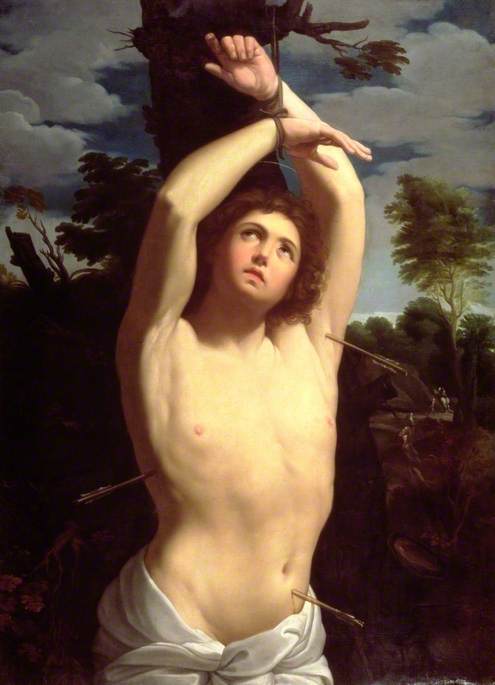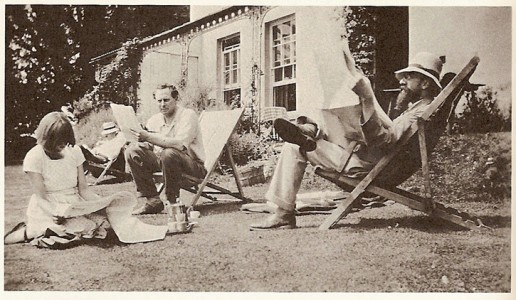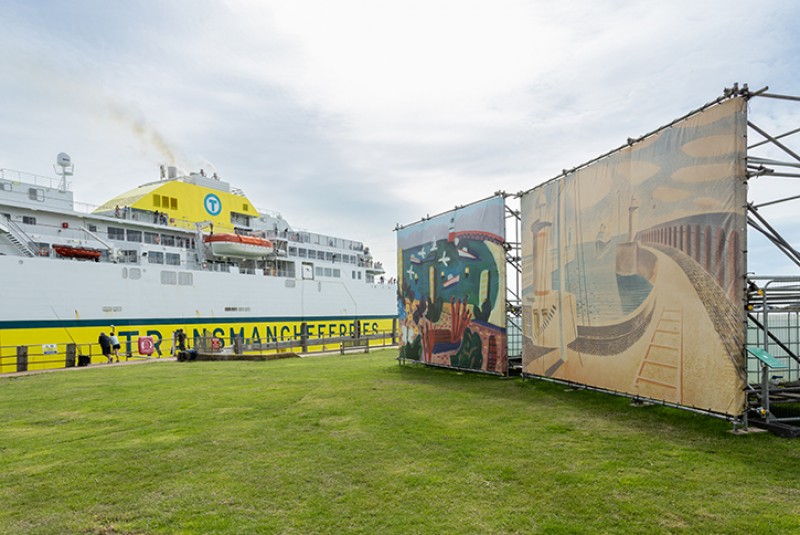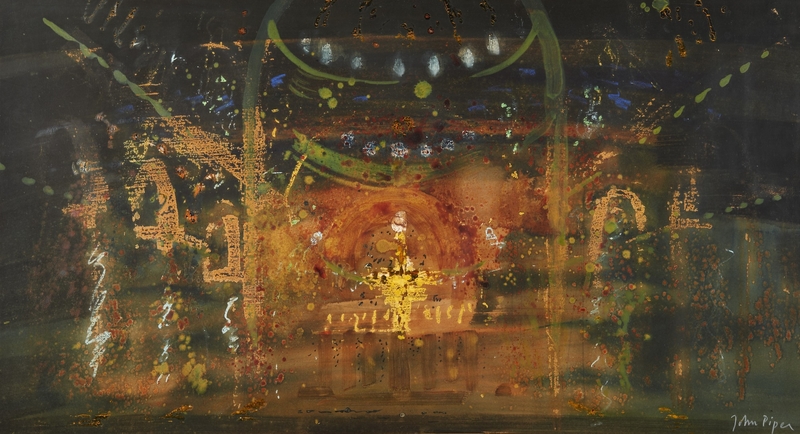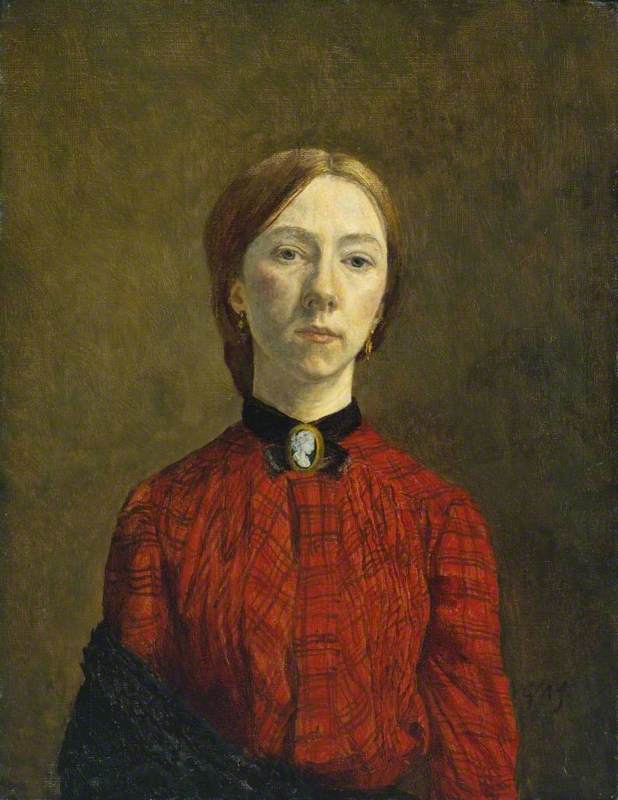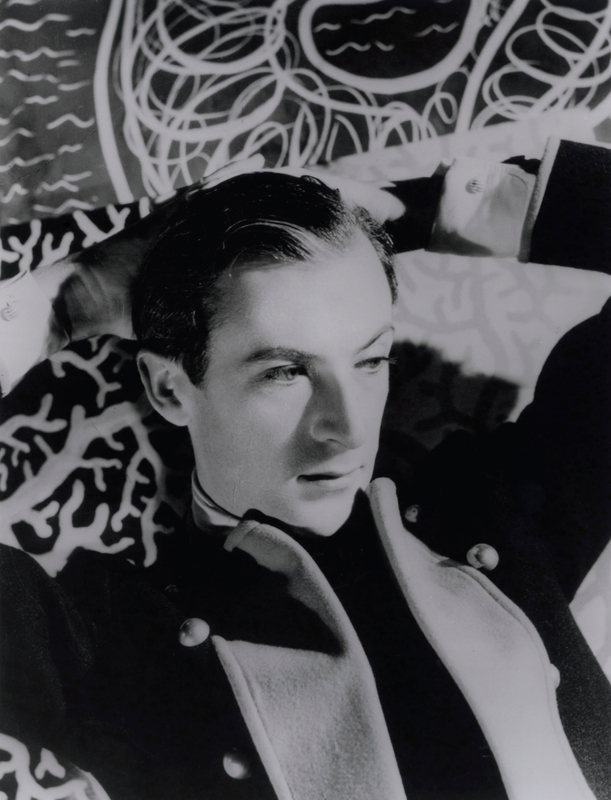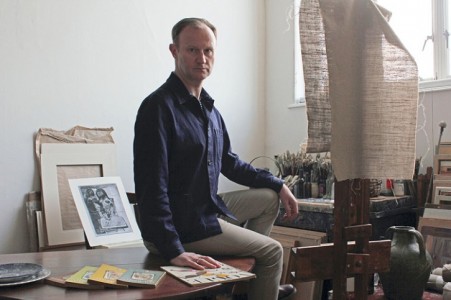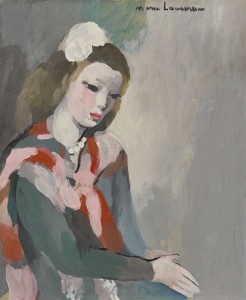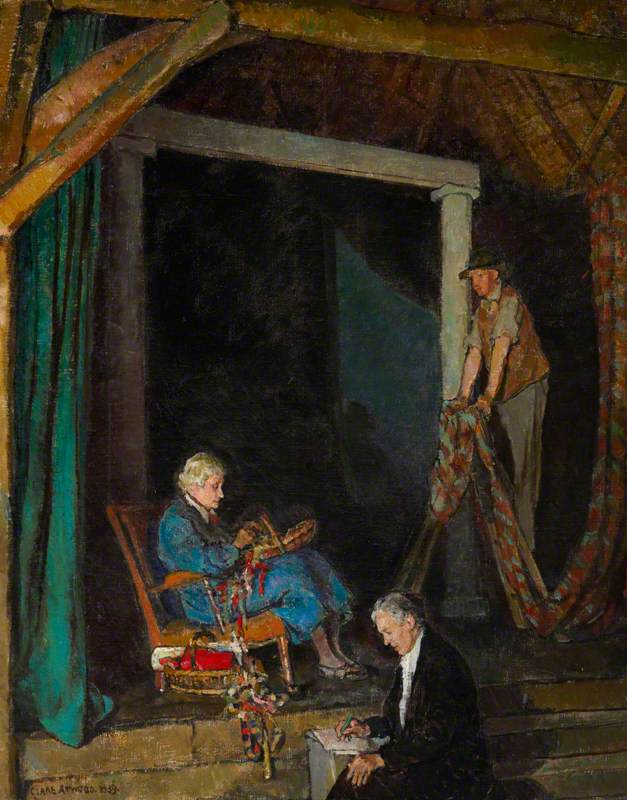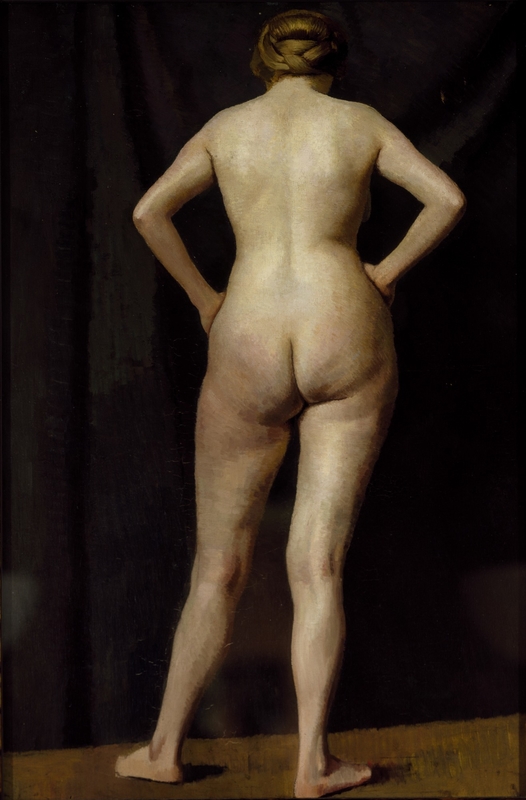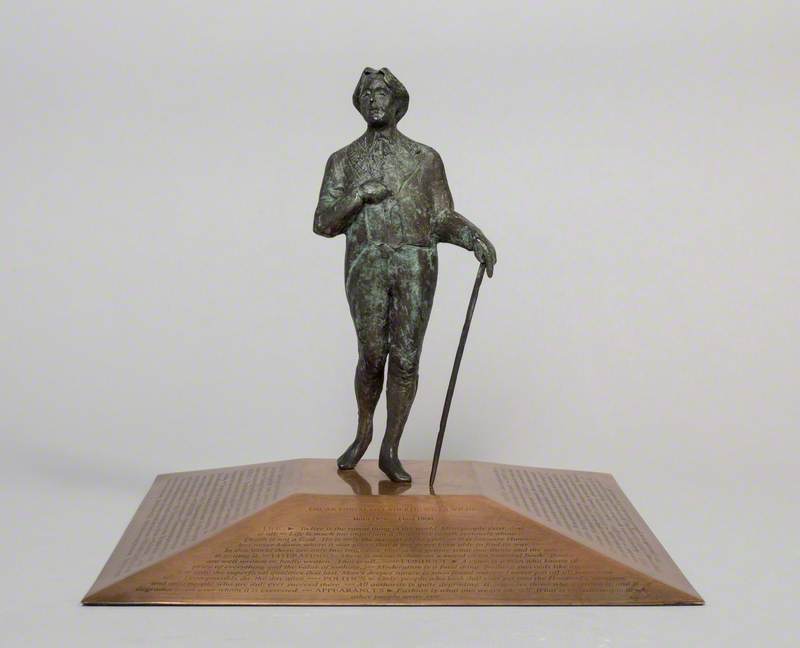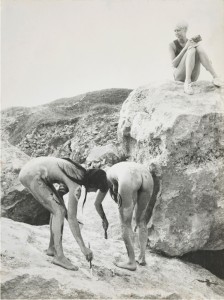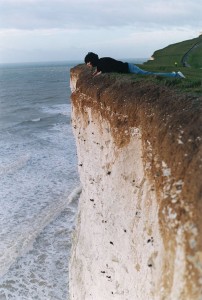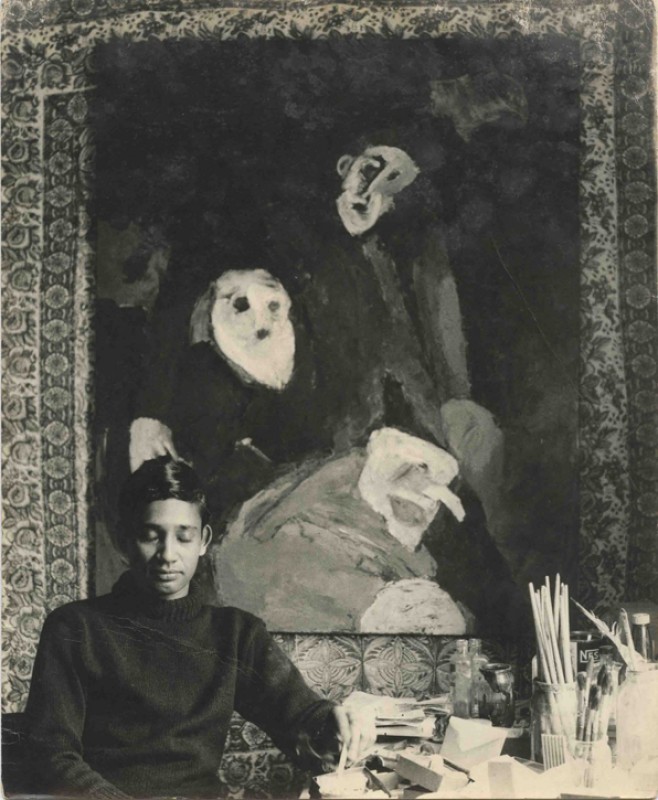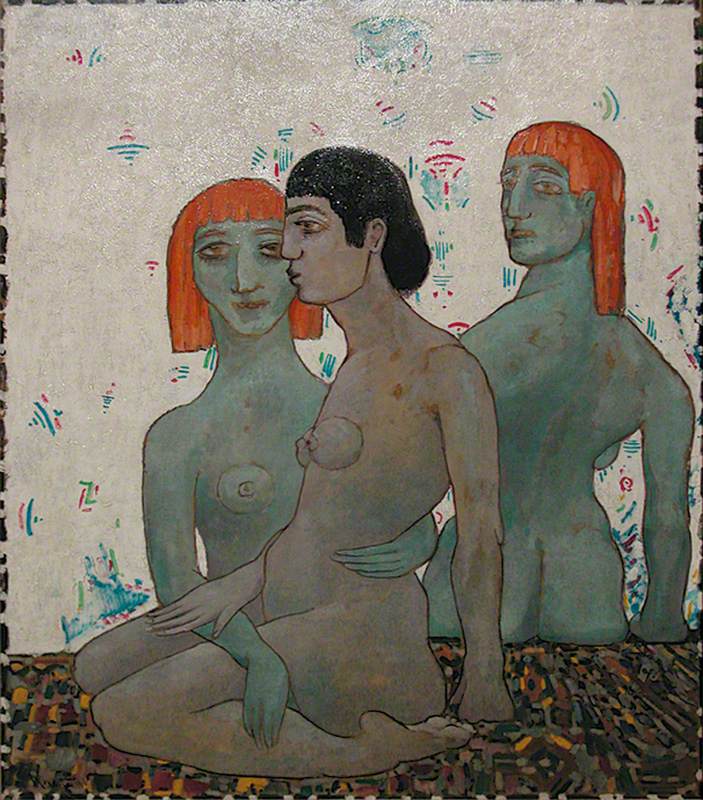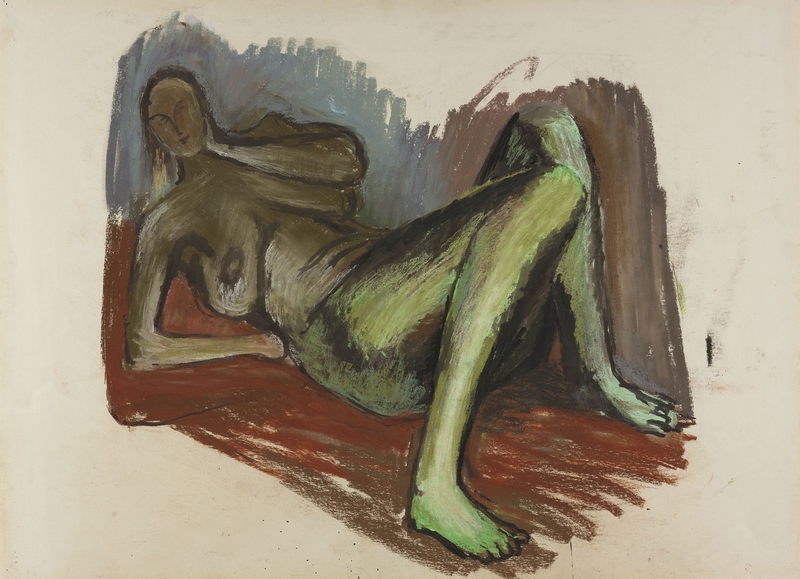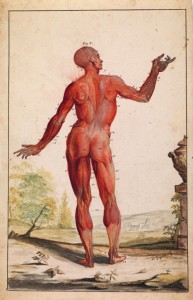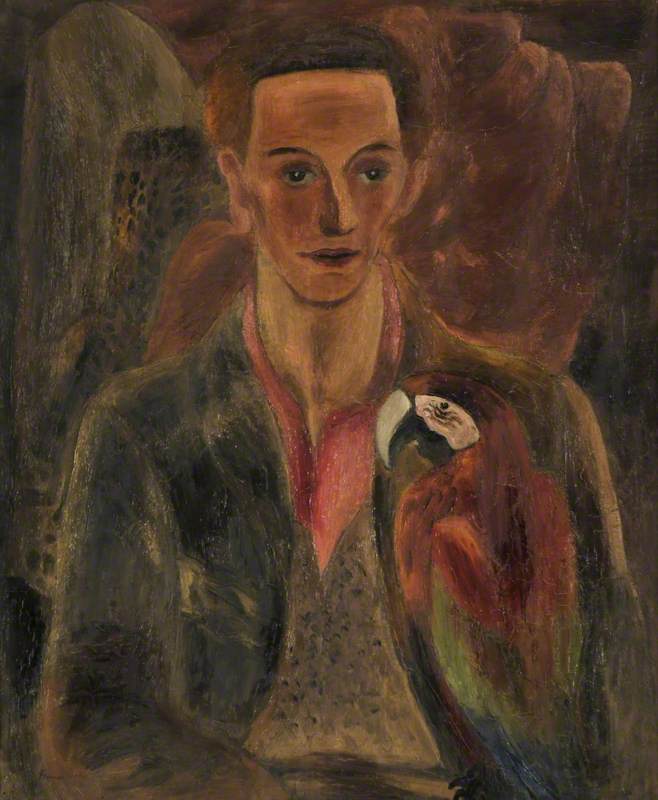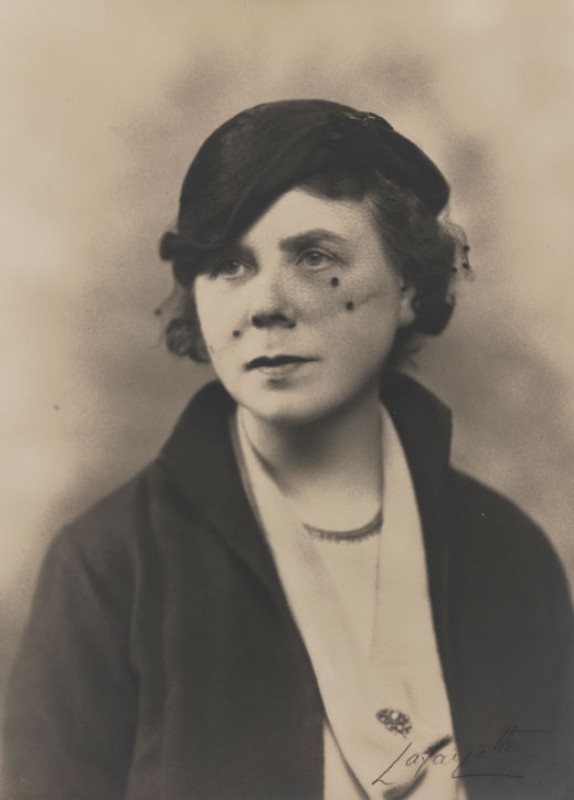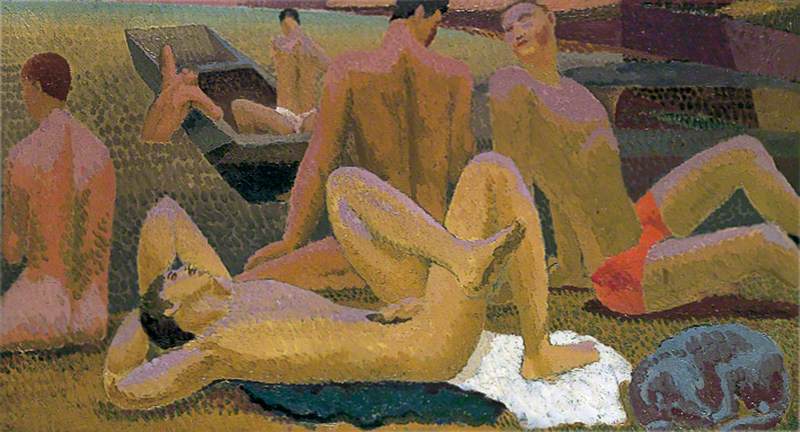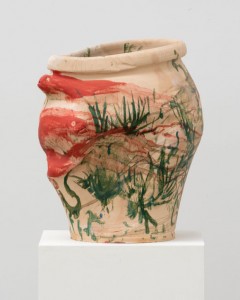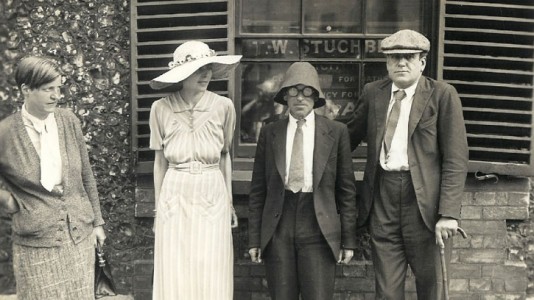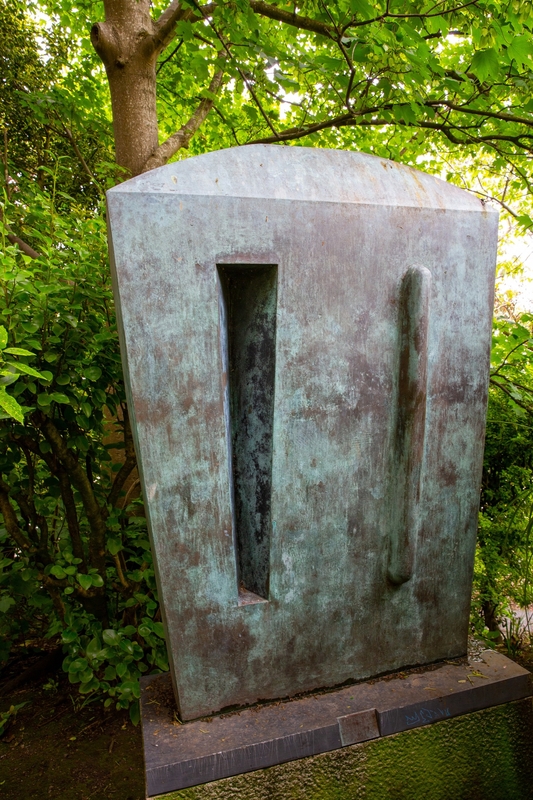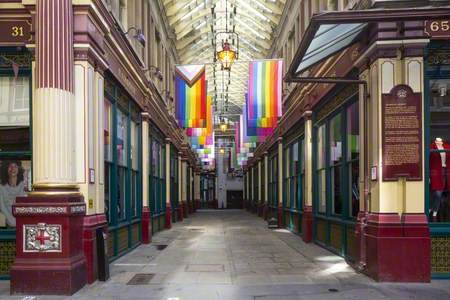In collaboration with Towner Eastbourne, 'Queering the collection' highlights works by LGBTQIA+ artists in the collection, written by Collectively podcast host and artist Renee Vaughan Sutherland.
When I first encountered John Minton's Spanish Village (c.1950), I felt an instant gut-punch of queerness. This serene, if not quaint orchestration of a village nestling into a rolling green hillside by the sea emits a different emotional frequency to what is being presented.
The painting draws you in but also insists you remain on the outside – an outsider. It's not a trick or fluke that the communication echoes beyond the image – or in its rawest sense beyond the application of paint – the artist is infused in this picture. Knowing nothing about Minton and having never seen this painting before, my first viewing was a visceral retreating within myself, somewhat reverently.
As with most art, seeing it in its original state makes a significant difference to our overall perception – digital documentation of this image flattens and brightens the brooding tone of this work. In real life, the apartments – that appear to be on a quayside – contain windows that ping with a warm glow as dusk rolls in across the hillside and settles on the village. The omniscient point of view – from the viewer's perspective – is distanced from the buildings and their alluring windows, but also slightly elevated: hovering. This perspective – one that emphasises alienation – transmits a queer frequency that vibrates from the surface of the canvas towards me.
Spanish Village was painted around 1950, when the UK was still a generation away from decriminalising homosexuality. Minton was gay, and it was public knowledge during his lifetime that he had a number of partners and lovers, including a polyamorous relationship with fellow artists Lucian Freud and Robert MacBryde. He was initially a conscientious objector during the Second World War (before he changed his mind), and became an artist of moderate success, although making a living from his work was consistently a challenge and he had an addiction to alcohol.
In recent decades, a lot has changed in the context of LGBTQIA+ visibility and rights (there is no denying we still have a long way to go). But for every queer being there comes a moment of realisation – of being different. Even in the most supportive context, things such as 'celebrating one's coming out' is a marker of deviation from the 'norm'. I think it is a fair assumption to say that Minton felt like an outsider (but that could also be a projection on my part). I've often looked in on brightly lit windows with longing, a desire to bask in the vibrating radiance of what is suggested behind them – love, family, a home – especially in my younger years when I wasn't sure what that could look like for me. Viewing the painting is like a recreation of what I felt in those moments: life is happening behind those windows and I am on the outside, uncertain, hovering.
Minton's skill is that the lit windows convey a sense of human life – of people and bodies in those spaces. But no matter how much time you spend with the painting you can't say for certain whether the rooms are occupied. On closer inspection, it also seems likely that he painted the interior glow before he detailed the surrounding architectural structure – the glow is literally emanating from within the space.
It might be a cliché, but the realisation that the light comes before the structures, the facade which overlays the interior, feels poignant for any person who is queer and also pursues a creative and artistic life.
Renee Vaughan Sutherland, artist and host of Towner Eastbourne's podcast Collectively
